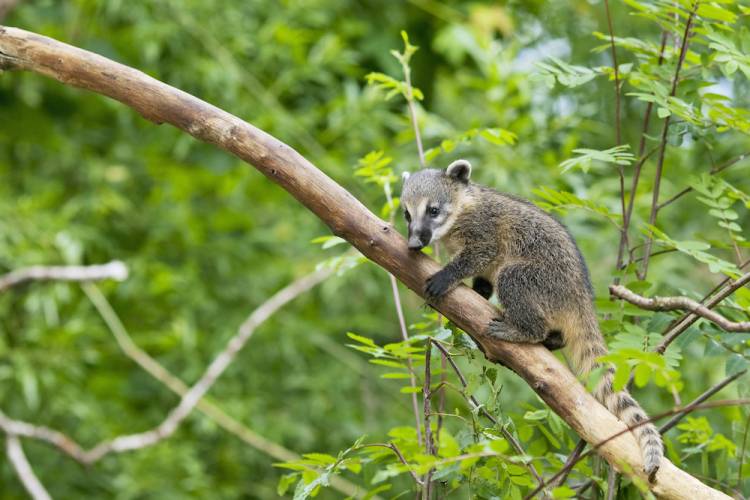3 Yucatan Peninsula Wildlife Encounters

The Yucatan Peninsula is known for its ancient Mayan ruins, clear blue cenotes, sunny beaches and plentiful margaritas. But if you really want to live the wild life in the Mayan Riviera, then you need to get out and see the wildlife.
Whether you’re looking for an ocean adventure or a deep jungle trek, there are plenty of wildlife adventures that await in the Yucatan. Here are three of the best:
Swimming With Sea Turtles in Akumal
The Bay of Akumal lies conveniently between two major tourist destinations: Tulum and Playa del Carmen; sea turtles come to Akumal to feed on the seagrass. The bay is also home to stingrays, remoras, cuttlefish and a myriad of colourful fish that live in the patches of coral.
Once in Akumal, you can rent snorkel gear and lifejackets from the hut on the beach or the dive shop. Note that if it’s a windy day and the red flag is up, they won’t rent you the equipment.
The best way to find the sea turtles is to swim away from coral, as they are more likely to be in the seagrass meadows, feeding. If you see a group of snorkellers, it is very possible they are watching a turtle.
Float on the surface and watch them from a distance. Remember not to chase them or touch them. To protect their environment, always wear biodegradable sunscreen or just wear a t-shirt and shorts to protect you from sunburn.
Following Coatis in the Jungle
The Calakmul Biosphere Reserve, in the south of the Yucatan Peninsula, is famous not only for its Mayan ruins, but also for its great diversity of wildlife. From jaguars to tapirs, from toucans to spider monkeys, a trip to Calakmul always brings new sightings. Our favourite animal to watch is the coati (a relative of the raccoon), as they travel in large groups and are often curious about humans.
The drive from the main road down to Calakmul takes two hours and is the perfect place to spot coatis. Drive slowly, turn your stereo off and listen for the crack of twigs in the trees. You may also see a fresh pile of leaves and debris that has fallen in the road, indicating a group of coatis or monkeys is feeding overhead. It’s okay to step out of the car to take photographs. Coatis are not easily scared, so great close-up photo opportunities are abundant.
Swimming with Whale Sharks
Imagine swimming alongside the biggest shark in the world. Thankfully, whale sharks are not predators. They are filter feeders and their diet consists of plankton and tiny fish eggs.
From June to early September, these giants make their appearance in Yucatan waters as they feed on fish eggs. The record-breaking number of them, found in two different aggregations along the peninsula, makes the Yucatan the best place in the world to swim with whale sharks.
You can catch whale shark snorkelling tours from Cancun, Isla Mujeres and Isla Holbox. If you stay in Holbox, you’ll be within easy reach of the “Catoche” grouping. The trip to the “Azul” aggregation (closer to Isla Mujeres) is about two hours each way, but well worth it for the clear blue waters. The island is a quiet getaway for nature lovers and there is plenty of wildlife to see.
Take a VIP whale shark tour and you’ll get to spend more time in the water with the sharks and eat fresh ceviche prepared especially for you on the way home.
Very important Note: Just remember, please don’t feed any of the wild animals that you encounter in the Yucatan.
Source: Travel 4 wildlife.com
Story by: Cristina Garcia and Hal Brindley
